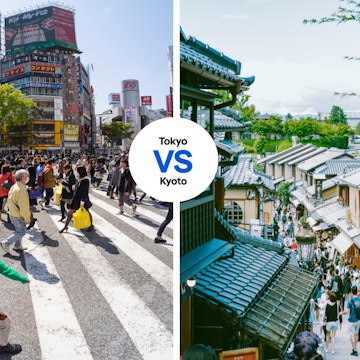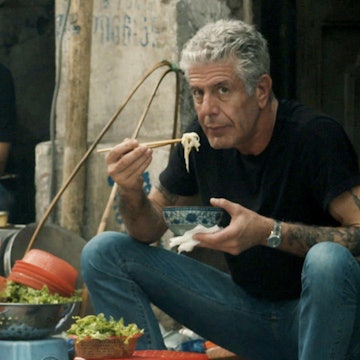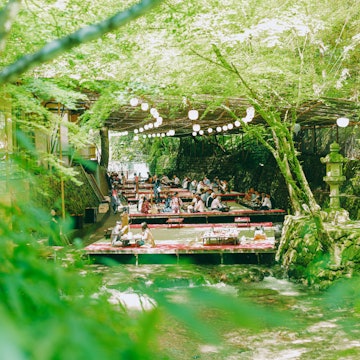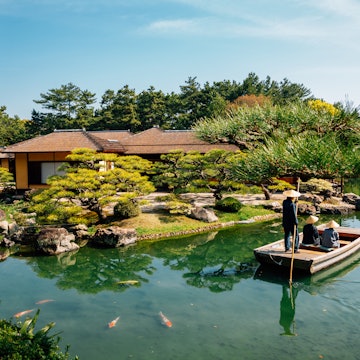

Kaiseki ryōri is a haute cuisine, multi-course dining experience. KPG_Payless / Shutterstock
The city of Kyoto is best known for its tranquil temples and picturesque shrines, but its rich history as Japan's ancient capital has also left it with an elegant and refined culinary tradition that’s not to be missed.
Here’s our guide to the top Kyoto restaurants to visit and local dishes to try during your stay.
Indulge in extravagant kaiseki ryōri
Kaiseki is Japan’s haute cuisine, a multi-course dining experience of the utmost sophistication. Each dish – and there can be upwards of 10 – is meticulously prepared and exquisitely presented, the result being more like a work of art than a meal. You can expect a wide range of local, seasonal and traditional ingredients used. Kaiseki meals are often included with stays at a ryokan (traditional Japanese inn), but there are plenty of restaurants in Kyoto where you can enjoy this elaborate fare, particularly in the Gion and Higashiyama areas.
Try Hyōtei, which, at 400 years old, is an atmospheric Kyoto institution, or Kyoto Kitcho Arashiyama, where you can enjoy gorgeous views of the gardens while you eat. Both of these Kyoto restaurants have Michelin stars with price tags to match – dinner menus start from around US$250. For something more contemporary and affordable, try Roan Kikunoi in the heart of geisha-filled Gion, where prices start at US$130.
Enjoy high-end plant-based dishes with a shōjin ryōri meal
Vegetarians and vegans visiting Kyoto are in for a treat with the city’s other famous type of multi-course cuisine, shōjin-ryōri. This traditional Buddhist fare is just as beautiful and elegant as kaiseki, but made without animal ingredients. To experience it the proper way, go to a temple restaurant such as Shigetsu, which lies within the zen-like grounds of Tenryū-ji in the picturesque Arashiyama neighborhood and has set menus costing US$30 to US$70 depending on how hungry you are.
For more modern vegan fare in the city that usually comes in at under US$15 a dish, try Choice, which makes its own vegan cheese onsite, or Ain Soph Journey. The latter’s menu has a wealth of plant-based dishes, from curry and paella to burgers and pasta, but the real showstoppers are the pancakes. Made with matcha and vegan white chocolate, these super-fluffy delights might just be the best dessert you've ever had.
Challenge your preconceptions with innovative tofu dishes
Speaking of vegetarian food, tofu is one of the city’s specialities, and you’ll be amazed at all the things chefs in Kyoto restaurants can do with this humble ingredient. Head to Junsei Shoin in the grounds of Nanzen-ji in the east of the city to see what we mean. Here you can sample yudōfu – soft squares of tofu simmered in broth – as well as yuba, or tofu skin, which is made by skimming the top from gently cooking soy milk in a set course menu ranging from US$25 to US$40. Many izakaya (traditional Japanese pubs) serve agedōfu (deep-fried tofu with a crispy outside and creamy inside), which goes perfectly with a cold beer.
For something sweeter, look out for street stalls and restaurants such as Saga Tofu Ine selling tofu doughnuts and tofu ice cream for around US$2.50.

Dig into local delicacies at Nishiki Market
When it comes to street stalls, there’s no better place to go than Nishiki Market. Also known as Kyoto’s Kitchen, this narrow, traditional food market runs through the center of the city just north of Shijō-dōri. It’s a bustling hub, overwhelming the senses and selling a wide range of fresh, local products, from seafood, tofu and pickles to tea, sake and sweet treats. Try some of the samples, as well as to-go street food like yakitori (grilled chicken) and mochi (sweet, sticky rice cakes).
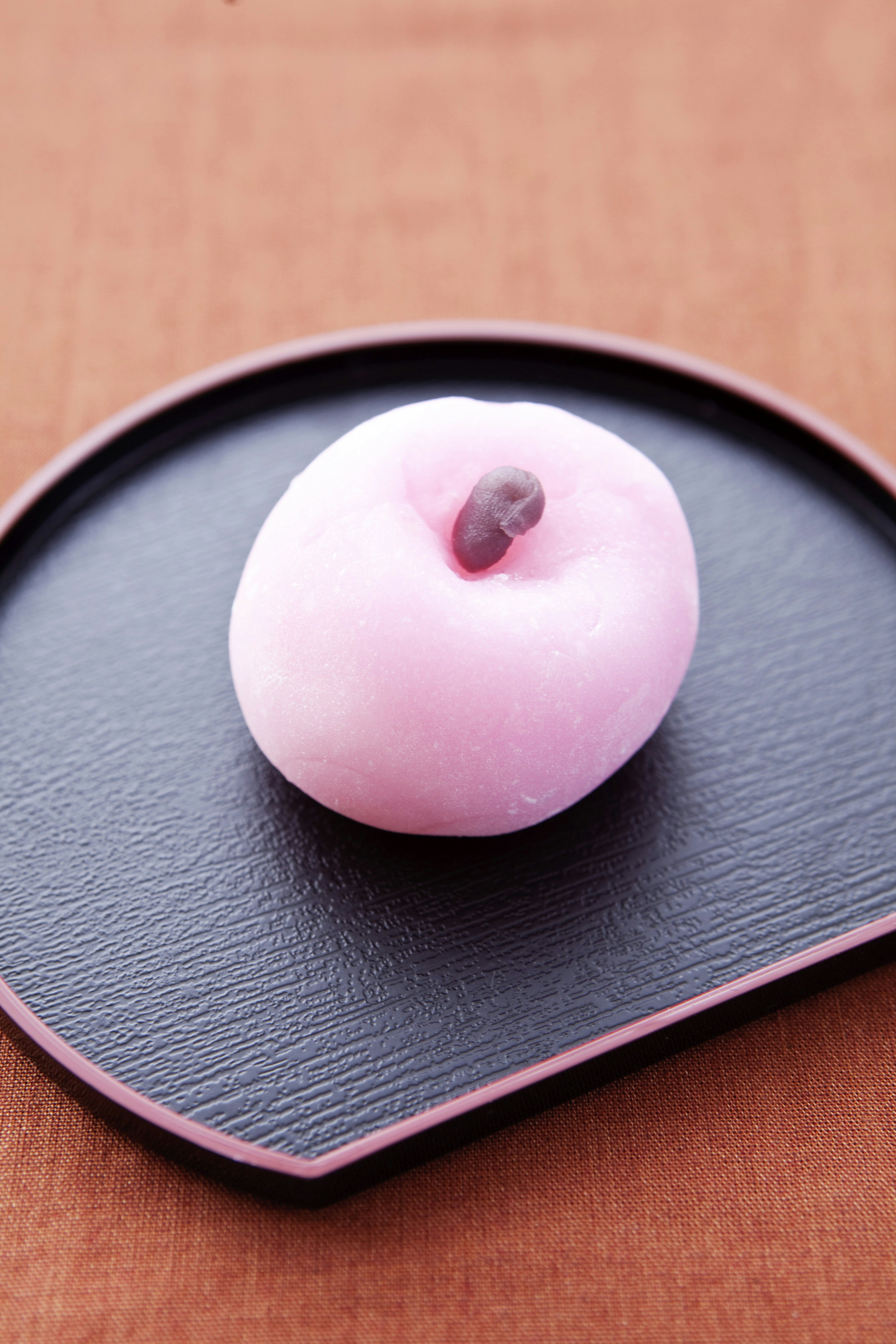
Satisfy your sweet tooth with wagashi
Kyoto has some of the most delicate, exquisite and adorable confectionery in the world. Kyo-wagashi are traditional Japanese sweets from Kyoto and were originally served as part of the tea ceremony to offset the bitterness of matcha. Made using sweet bean paste from either red adzuki beans (anko) or white beans (shiroan), it’s the decoration that makes them so special. Each sweet is hand-sculpted into a seasonal flower, a cute character, a local fruit or any one of a number of designs. Other varieties include higashi – dried sweets made using a wooden mold – and jelly-like yōkan. The intricacy and beauty of these creations is so impressive that you might find it hard to eat them!
Sweet shops can be found across the city, often with tea rooms attached. One of the best is Kagizen Yoshifusa in Gion, whose serene tea room and authentic sweets will transport you right back to ancient Kyoto for less than US$10. It’s also possible to find cheaper, mass-produced wagashi in convenience stores and grocery stores.

Sip sublime green tea
In Kyoto, tea and sweets are an unbeatable pairing. Just south of the city lies the small town of Uji, which is known across the country as one of Japan's best producers of top quality green tea. This makes getting a perfect bowl of matcha in Kyoto a breeze. The city has an abundance of teahouses where you can attend a tea ceremony, learn more about the drink, or simply sit back and relax with a cup.
Camellia offers authentic tea ceremonies in English for around US$25 per person, with optional kimono rental. If you’re looking to buy some tea to take home with you, Kyoto's famous shop Ippōdō Tea can’t be beaten.
Raise a toast with local sake
Kyoto’s other drink of choice is nihonshū, better known as sake, and the city’s Fushimi district is renowned as one of the best producers of rice wine in the whole of Japan. Home to around 40 sake breweries, it sits on the intersection of three rivers prized for the purity of their waters. Drop by the Gekkeikan Ōkura Sake Museum to learn more about the tipple and sample some finished products for a mere US$5 or head to Aburacho, which boasts more than 80 different types of sake. If you’re more of a craft beer fan, nearby Kizakura Kappa Country is the place to go. Check out its matcha beer for a unique twist on a local ingredient.
You might also like:
Japan's freshest food (and where to find it)
The 9 best day trips from Kyoto: shrines, bathhouses, and superb local food
Yamanashi, Japan’s surprise up-and-coming wine region










